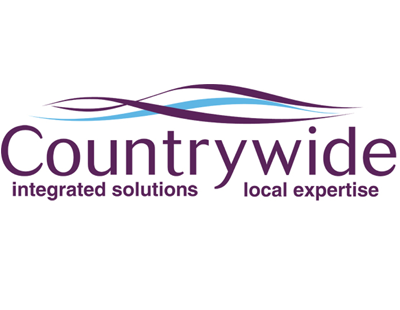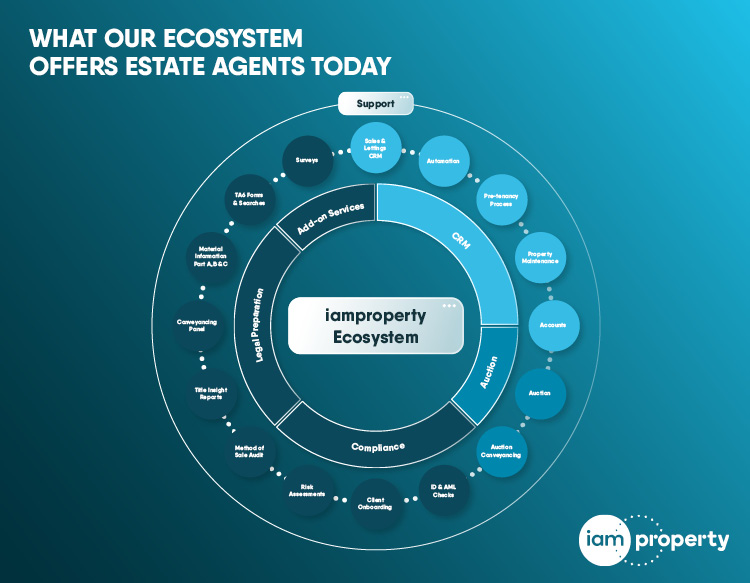In the fast-evolving landscape of the real estate industry, branding plays an integral role in how agencies distinguish themselves and connect with consumers. It's worth noting that there is a 92% correlation between estate agency brand awareness and customer numbers.
“Take, for example, Connells Group including Countrywide, where I was Group Marketing Director between 2016 and 2017. The 80-plus brands of the group exemplify a critical misstep in marketing strategy: over-extension and dilution of brand equity and limited marketing resources.
While inherited through acquisition, its continued existence makes no sense. Other examples are LSL, Arun Estates, and The Property Franchise Group.
The house of brands approach - a strategy where each brand has its own brand identity, often representing a separate demographic, geographic, need, or occasion - can be a double-edged sword. On the one hand, it allows a company to cater to diverse market segments by promoting various brands under its umbrella. It is excellent if you are a global behemoth like Unilever, with a $7.8bn marketing budget or P&G with $5.1bn.
On the other, it poses the risk of massively diluting marketing efforts, especially in a fragmented market with a constrained budget, such as an estate agency. I had a healthy eight-figure marketing budget at Countrywide in 2016-2017, which sounds like a lot until it was spread thinly over 60 or more brands.
Connells has a staggering 80 brands in its portfolio. This is split between the festival of brands of Countrywide, and the fudging of brands of the Connells Sequence set of allegedly “well-known local brands”.
Well-known to whom? In an independent survey we conducted in March with Opinium, we asked a representative sample of the population: "How many estate agencies in your local area are currently listing properties or have for sale boards that you've seen in the past two weeks while out and about or online.”
The most significant single answer was "I don't remember any" at 29%, with 61% being able to think of three or fewer. The highest region had 44% who couldn’t remember any or said none. When I was partner and global head of marketing at Knight Frank, very affluent and incredibly well-informed people would ask me who Knight Frank was - brand awareness amongst homeowners, 28%. People are just not as interested in estate agency brands as we think or would like.
Distributing limited marketing resources across such a bewildering array of brands dilutes the messaging, increases costs, reduces geographical brand overspill, and reduces each brand's potential impact and profitability. This scattergun approach may make sense if there are infinite resources, but this is rarely the case.
Connells would benefit from consolidation for a more effective and cohesive brand strategy.
Retaining seven regional heavyweight brands where they are strongest, for example (#s are market share in instructions):
1. Connells (#1 in the South West, West Midlands, #3 South East)
2. William H Brown (#1 East of England, #1 Yorks & Humberside #2 East Midlands, )
3. Barnard Marcus (#6 London)
4. Manners & Harrison (#17 North East)
5. Bridgfords or Entwhistle Green (#3 and 4, North West)
6. Slater Hogg & Howison (#1 Scotland)
7. Peter Alan (#1 Wales)
This would offer a more streamlined, recognisable, and efficient branding model. Merging Connells Group non-Connells brands in most regions would mean they move firmly into a commanding first or strong challenger in second position across almost every region.
Retaining the two prime brands of Hamptons (#4 £750k+ nationally) and John D Wood (specifically for prime and central London) seems prudent in the specialised upper-decile market.
Nine brands still feel like too many, though. I’d aim for five: South, Midlands & North, Wales and Scotland plus Prime.
The Connells Sequence strategy, where multiple local brands share a similar visual identity, may create an illusion of unity internally. However, from a consumer perspective, it manifests as an array of disparate mini brands, causing confusion and diluting the overall brand impact.
As Manners & Harrison, William H Brown, and Barnard Marcus are Sequence brands (similar livery, different name), creating an Eastern England powerhouse brand from London through the East of England, East Midlands, Yorkshire & Humberside and the North East wouldn't take too much effort. Connells would dominate the West Midlands, South West and South East, with Bridgfords or Entwhistle Green in the North West.
Using standard regions is just a proxy for this thought piece. Gravity models would be vital in developing the most effective network distribution for optimal brand and market penetration brand by brand, postcode by postcode. As anyone who knows me, I'm happy to bang on about Newton's law of gravitation regarding brand and branch planning at any point. But the fact remains: consolidate brands to dominate customer awareness and consideration.
Any change can be gradual and sensitively done, with brands slowly coming together through data-driven Research & Analysis, Strategic Planning, Creative Development, Implementation, and Evaluation & Iteration, with cobranding (e.g., Sequence on steroids) as the first step towards complete rebranding over months or even years.
An 80-brand strategy is just inefficient and incoherent from a brand perspective.
In the era of modern scientific marketing and increasingly sophisticated, connected, and geographically mobile customers, real estate giants must reconsider the wisdom and viability of managing an overly expansive brand portfolio.
Streamlining, consolidating, and focusing on brands with substantial market recognition and potential can pave the way for enhanced consumer loyalty, better brand recognition, and, ultimately, more significant market share.
An open question is whether the industry and consumers would want Connells (and other corporates) to be more successful.


















%20-%20IMAGE%20Client%20Accounting%20%E2%80%93%20what%20are%20your%20options.jpg)


.png)
.png)
.png)
%20(002).png)






%20(002).jpg)












Join the conversation
Jump to latest comment and add your reply
If agencies rely on marketing/promotion being the same as it ever was, I'd agree but we no longer live in the 90's when brand awareness was key.
It's easily achievable for brands to now build not only awareness but engagement, trust and loyalty for a relatively insignificant marketing cost. Tv ads, radio, Facebook ads, PR and glossy brochures belong in the past.
The solution is not to consolidate the brand marketing but to make it cost-effective.
I'm guessing the author has no idea how to do that?
You don’t really understand marketing do you Chris.
You don’t really understand marketing do you Chris.
Please login to comment